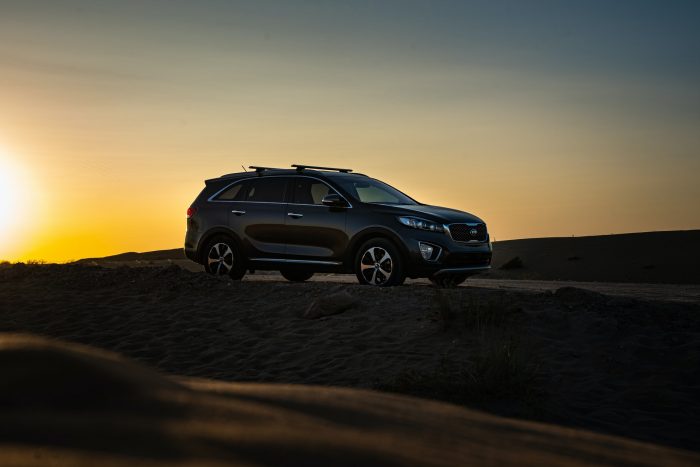Today, cars and SUVs are made safer than ever, but what are some of the safety features you should make sure your SUV has? If your new ride has the safety features outlined below, you and your family will have peace of mind when you hit the road. And for those looking for the safest SUVs out there, take a look at these safe vehicles.

Forward Collision Warning
State Farm recommends this system that has sensors at the front of the SUV to monitor relative speed and distance from the vehicle in front of you. If the forward-collision warning system senses a crash is imminent, it alerts the driver with an alarm or visual cue.
If the vehicle has autonomous braking, it will automatically hit the brakes to avoid a crash. The Insurance Institute for Highway Safety (IIHS) reports that both systems reduce car crashes.
Blind Spot Detection
Blind spots can obscure vehicles beside or behind you. This means that you cannot see the car in your mirrors or when looking straight ahead; you need to look over your shoulders to see them. That’s why blind spot accidents happen so frequently when drivers try to change lanes.
A blind-spot detection system will alert you when a car is in your blind spot. The alert will get louder or brighter if you turn on your turn signal to change lanes. Some systems may hit the brakes or alter your steering to avert the accident.
Research on the effectiveness of blind-spot detection systems is mixed, but many vehicle owners say that the system helps them avoid accidents.
Adaptive Headlights

These advanced headlights turn in the direction you’re going and are helpful to enhance visibility as you go around a curve. Adaptive headlights are available on vehicles from Volvo, Mercedes, Mazda, and Acura, and some estimates are that they’ve reduced property damage liability claims by 10%.
Lane Departure Warning
This system uses a camera around the rearview mirror to watch where your vehicle is in the lane. If you leave the lane without meaning to do so, it will alert you with a sound or steering wheel vibration. Other systems use light braking or steering to prevent an unintended lane departure.
Telematics
GM was the first manufacturer to allow drivers to contact an emergency or dispatch center when they were stranded on the road. But many SUV manufacturers today, including Toyota, Kia, and Honda, have a factory-installed communication system that uses cell phone and GPS technology.
This system can help you find when you lose your car in a parking car or get an ambulance after a crash.
Electronic Stability Control (ESC)
ESC is standard on virtually all vehicles made after 2012, including SUVs. This system has sensors to help the SUV avoid skidding or sliding. It’s beneficial in SUVs with a higher center of gravity, which is more likely to roll over in an accident.
Adaptive Cruise Control (ACC)
This system has sensors and radar in the grill to focus on the vehicle ahead of you and keep a safe distance by applying the gas or brakes as needed.
ACC is helpful on long highway rides and helps many people to avoid accidents. If it senses a collision is imminent, the ACC brakes hard and makes the seatbelts tighter.
Tire Pressure Monitoring System

This system detects when the tire pressure on your SUV drops under the manufacturer’s recommended PSI. Temperature changes can reduce pressure, which can increase the chances of a tire blowout.
If your tire pressure drops under the recommended range, you’ll see an alert on your dashboard.
Now that you know some of the must-have safety features on your new SUV, you can buy your next vehicle with peace of mind.











